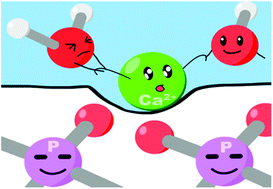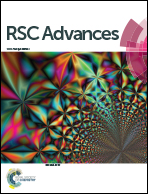Probing the surface structure of hydroxyapatite through its interaction with hydroxyl: a first-principles study†
Abstract
Understanding the interaction of the hydroxyapatite (HAp) surface with hydroxyl originating from either the alkalescent physiological environment or HAp itself is crucial for the development of HAp-based biomaterials. Periodical density functional theory calculations were carried out in this study to explore the interaction of the HAp (100), (010) and (001) facets with hydroxyl. Based on a comparison study of Ca-rich, PO4-rich and Ca–PO4–OH mixed surfaces, the interaction pattern, interaction energy and effect of an additional water molecule on the Ca–OH interaction were comprehensively studied. The formation of CaOH on the Ca-rich surface was energetically favored on (100) and (001), while Ca(OH)2 was energetically favored on (010). The Ca–water interaction was competitive, but had lower interaction energy than Ca–OH. Furthermore, Ca–O bonding and its influence on the OH stretching vibration were analyzed. Our calculations suggest that the hydroxyl-coated surface structure is more appropriate than the commonly used Ca-terminated surface model for studying HAp surface activity in its service environments.



 Please wait while we load your content...
Please wait while we load your content...